|
Most people like watching the popular TV show Shark Tank because it is entertaining and can teach you a lot about entrepreneurship. But even if you don't aspire to become an entrepreneur, it can also teach you a lot about how to ace a job interview. It's hard for entrepreneurs to get on Shark Tank. Very few get to pitch their business to "sharks" (investors interested in funding entrepreneurs' business for equity). Getting a deal from "sharks" is harder. You have to prove your mettle and your growth potential. Similarly, getting a job interview is hard; walking away with a job offer is harder. Getting a deal on "Shark Tank" is not much different than getting a job. You have to use the same skills. Just like entrepreneurs on Shark Tank, to get a job, you must have these five things: Product, Purpose, Passion, Presentation, and Prize. Product Entrepreneurs on Shark Tank have a product or service they have developed over a long time. The product must solve customers' problems and make money. In a job interview, you are the product. And you have to show how you can solve an employers' problem so they can make money. Purpose This is your why. Most entrepreneurs on Shark Tank have a good story on why they are entrepreneurs. Sharks like to hear about entrepreneurs' why before they invest. When interviewing, you must have your why. Interviewers need to know why do you love what you do as a professional. Passion Entrepreneurs on Shark Tank are passionate about their products. This is a MUST. If entrepreneurs can't get excited about their product, they can't get "sharks" excited about making an investment. You must do the same when you are interviewing. You must show passion for your product---You--- and the value you will deliver. Presentation Entrepreneurs on Shark Tank are judged on how well they can present to "sharks." This is the test all entrepreneurs must ace. In a job interview, you must also do the same. You have to show who you are, what you have, and why they should care. If you do this well, you are likely to get the job. Prize Entrepreneurs know why they are on Shark Tank. They want a deal from the "sharks" to take their business to the next level. Also, they need to show why they are a prize for the sharks to want a bet on them. In a job interview, you must focus on getting a job offer and showing why the employer should bet on you to drive growth. Presentation Wins Deals To secure a deal from "sharks," entrepreneurs have to do a great job at presenting their product, business, and growth. Similarly, getting a job comes down to how well you can articulate the value you bring to an employer. You have to show confidence by displaying these five attributes in your interview like you are on "Shark Tank":
Simplicity Sharks get pitched a lot, so entrepreneurs must keep it simple. The successful ones tell, sell and close.
You have to do the same when interviewing. You have to keep it simple and must tell, sell and close. Clarity Entrepreneurs who are talking too much and not clear of what they are doing and where they want to go with their business are less likely to get a deal. The ones who get a deal are very clear and don't make the sharks think too hard. You must do the same when you are interviewing. Clarity is key to your success. You want to say less and let the interviewers ask for more if they are interested in knowing more details. Remember, the more words you use, the more you will confuse. You are likely to make the interviewers think hard. And when they have to think hard, they don't make a decision in your favor. Focus A lot of entrepreneurs lose deals because they are not focused. Lack of focus confuses the sharks, and they don't invest. In a job interview, you must stay focused on your message, narrative, problem-solving skills, and the value you can deliver to an employer. And keep repeating it. Saying it once is not enough. In the Old Testament, you see the Lord reminding Israelites how He rescued them from Egypt and gave them the land filled with milk and honey? There is a lot of repetition in the Bible. And the Bible is still the most popular book in the world. In an interview, act like a Lord and repeat what value you have delivered and will deliver in the future. It works. Money Entrepreneurs must be able to talk about money confidently. They must explain how much money they have made. How they plan to make more money in the future and how. Entrepreneurs are judged heavily on their ability to explain money. In a sense, it's all about money. Similarly, you must talk about money you have made for previous employers. How you plan to make money for the employer with whom you are interviewing. You are going to be judged on this part of the interview more closely than anything else. Employers may like what you can do for them, but it is your job to link it to money. Companies are in business to make money and lots of it. If you have done it, say it. Don't assume the interviewers will figure it out. And yes, like the Bible, keep repeating, "I help companies make money." Attitude If you are on a stage that can change your life, you have to act like a winner. Entrepreneurs who act like winners on the show not only get a deal but get an excellent deal. When you are interviewing, you must show a winning attitude. It's contagious. You will not just get an offer but get an excellent offer. You have to act like a winner before you can be a winner. You must maintain your composure in a stressful situation and stick to your game plan. If you do that, you will exude confidence and increase your chances of getting a job offer. Getting a job is no different than getting a deal on "Shark Tank." You must have something sellable, but that is not enough. You have to do a great job in presenting your value in a job interview. It is a test to get the job. With some work, and perhaps so some targeted coaching, anyone can ace it. Good Luck! #####  I guide people thrive on high stakes stage whether it's for a job interview, career advancement, a sales presentation or a high-stakes speech. I wrote an advanced and comprehensive book on public speaking titled Winning Speech Moments: How to Achieve Your Objective with Anyone, Anytime, Anywhere. The main idea of the book is that if you want people to remember you and take action, you must create a winning speech moment in your speech. Please contact me if you would like to thrive on high stakes stage. You can reach me at joza@winningspeechmoments.com or 732-847-9877. Remember, Time is Money but Communication is Wealth
0 Comments
In the blog post "What makes you great at your profession?" I pointed out the importance of asking a fundamental question on what makes one great at your profession to improve. However, there is a negative side to being obsessed with being great at your profession. Again, I will use the modern classic "Remains of the Day" by Kazuo Ishiguro as an example. As I pointed out in the blog post, "What makes you great at your profession?" James Stevens gives a lot of thought to what makes one a great butler. He came up with two attributes: dignity and attachment to a distinguished household. I wrote this blog post because there is a price one pays to be great at something. We always focus on the gain and not the loss of being great. But as you will see from reading this post, you always lose something to gain something. And sometime trying to be great at something can have deleterious effect on you personally, professionally and/or financially. With Stevens, two monumental things are happening at the same time. One, he is about to lose Miss Kenton. Second, he is going to let his employer disgrace himself by being a Nazi sympathizer. Stevens' employer has been hoodwinked by the Germans about their true intentions. He is hosting a meeting between the British Prime Minister, Foreign Secretary, and the German Ambassador where a decision will be made. That decision will involve the British Prime Minister to appease Adolf Hitler and allow Germany to occupy part of Czechoslovakia, known as Sudetenland if, in return, Hitler promises to preserve peace but not invading any countries. For Stevens, two monumental things are happening at the same time that is going to give him regrets later but is completely oblivious of it as it is happening. He can't see anything besides what he is conditioned to see happening. Miss Kenton James Stevens is about to lose Miss Kenton forever. She informs Stevens that she has received a marriage proposal. Miss Kenton is trying to gauge whether Stevens has any romantic interest in her. She tells Stevens on two occasions that she has still not made a decision. Stevens doesn't say anything to make her not accept the proposal. Miss Kenton tries one more time to make sure that Stevens has no interest in her by asking, "But I can see you are very unhappy about my going out tonight." Stevens is focused on being a great butler for the big meeting that will be taking place in the mansion. He does not say anything to prevent Miss Kenton from accepting the marriage proposal. When Miss Kenton comes back from her meeting, she wants Stevens to know what happened as she asks him, "Are you not in the least interested in what took place tonight between my acquaintance and I, Mr. Stevens?" Stevens shows no interest as he replies, "I do not mean to be rude, Miss Kenton, but I really must return upstairs without further delay. The fact is, events of a global significance are taking place in this house at this very moment." Stevens is only focused on being a great butler by maintaining his dignity and doing his job well, so his employer plays a significant part in serving humanity. To Stevens, Miss Kenton leaving him for another man is insignificant. Significant Meeting Stevens leaves Miss Kenton to attend to his butler duties when he runs into Mr. Cardinal. The latter is a young man well acquainted with Stevens. Mr. Cardinal is a godson of Stevens' employer. In his meeting with Stevens' employer, he learned the significance of what is taking place at the mansion. He tries to convince Stevens to do his part to save his employer from being duped and disgraced. Like Miss Kenton, Mr. Cardinal gives Stevens several chances to save his employer from ruining his reputation as a Nazi sympathizer. Mr. Cardinal asks, "Stevens, do you know what is happening at this very moment as we sit here talking?" Stevens has no curiosity at all about the significance of what is taking place. He just wants to be a great butler. When pressed further by Mr. Cardinal, Stevens replied. "It is not my place to be curious about such matters, sir.' Mr. Cardinal asks if he has seen how his employer has been hoodwinked by the Germans for the last three to four years regarding their true intentions. To which Stevens replies, "I'm sorry, sir, I have failed to notice any such development." Stevens could not save Miss Kenton from leaving him, nor could he save his employer's reputation. He was oblivious to what was happening that evening. From Stevens's viewpoint, he was very pleased with how everything turned out. He maintained his dignity and served his employer well so his employer could do his part in "helping" humanity. So my point in using this example is to show that being great at something is fine, but it has the potential to create blind spots that could make you vulnerable to losing something else. There is no such thing as a free lunch when it comes to being obsessed with greatness. In closing, I want to use a real-world example in Deborah Birx, President Trump's White House coordinator for the pandemic response, that shows when one is obsessed in serving one's employer, it can produce catastrophic result. In the Op-Ed in Washington Post by Matt Bai titled "The Birx dilemma is a lesson for the ages," he writes that appeasement "doesn’t work for nations facing down aggressors. It doesn’t work for a political party that’s been taken over by a nativist bully. And it doesn’t work when you’re serving a president who demands unyielding loyalty and a willful disregard for the truth." The catastrophic result, according to her that more than 400,000 people didn't have to die from Covid-19. Deborah Birx had earned her stellar reputation as doctor who was involved in the global fight against AIDs. Because of her greatness, she was picked to advice President Trump. And that's where she developed a blind spot in protecting him over the American people. Though she may try her best to salvage her reputation, but most irreparable damage has been done. Sooner or Later, we all will face this dilemma like James Stevens in "Remains of the Day," and Deborah Birx in real life. How will we handle it? ##### 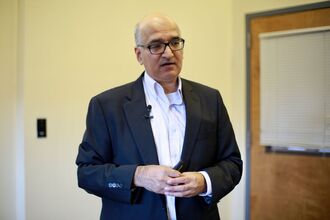 I am an author, speaker, career success coach. I guide people thrive on high stakes stage whether it's for a job interview, career advancement, a sales presentation or a high-stakes speech. I am the author of a practical book on speaking titled Winning Speech Moments: How to Achieve Your Objective with Anyone, Anytime, Anywhere. The main idea of the book is that if you want people to remember your speech and take action, you must create a winning speech moment. Please download the free speech checklist I created that I always use to create a winning speech for any occasion. Please contact me if you would like to thrive on high stakes stage. You can reach me at joza@winningspeechmoments.com or 732-847-9877. Note, if you are an author, executive, podcaster or interesting and would like me to interview with five questions and then publish it as a blog post and promote it on LinkedIn, Twitter and Facebook and become famous, please contact me. When was the last time you asked this question? You probably have never asked if you are like me, let alone even thought about asking this question. But how would you answer this question if you are asked at the final stage of your job interview? The answer could determine whether you get the job or not. I think it's a great question that will tell a lot about how you think, act, and excel in your profession. After reading the modern classic "Remains of the Day'' by Kazuo Ishiguro, I started thinking about this question. In the book, James Stevens, a butler, asks, "what makes a great butler?" He gives a lot of thought to this question as he is traveling in England's countryside. He comes up with two attributes of a great butler: dignity and attachment to a distinguished household. Dignity By this, Stevens means a butler gets the job done for his employer without anyone even knowing it. There are other attributes, such as competence, that are important, but it's dignity that stands above all for being a great butler. Stevens believes one could develop dignity through hard work, experience and self-learning. Stevens gives three examples of what he means by dignity in a great butler. I will use two of the examples in this post. The first one is a story Stevens heard from his father, who was also a butler. Stevens considered his father to be a great butler. The story is about a butler who had traveled with his employer to India and the incident that showed the butler's dignity in handling a dangerous situation. One afternoon the butler entered a dining room and saw a tiger relaxing below the dining table. The butler calmly approached his employer in a drawing-room (today it would be called a living room) where he was having tea with his guests. The butler let out a polite cough to get his employer's attention and whispered in his ear that there was a tiger in the dining room. He asked for his permission to use a shot-gun to take care of the situation. Soon, three shots were heard. A few minutes later, the butler appeared in the drawing-room to refill the teapot. When the employer asked if everything was fine, the butler replied, "'Perfectly fine, thank you, sir...Dinner will be served at the usual time, and I am pleased to say there will be no discernible traces left of the recent occurrence by that time." Stevens mentions that his father always laughed when he would repeat when butler added "no discernible traces left of the recent occurrence by that time." He was laughing since the butler is saying to his employer you don't need to explain anything to your guests since there is no evidence of anything occurring. The butler in the story did not panic. He got the job done and, most importantly, maintained his and his employer's dignity by not having the employer's guests get frightened and ruining their pleasant visit. The other incident of dignity involved Steven's father when he was a butler. This story was relayed to Stevens by someone named Mr. Charles, who was present when it occurred. One day Mr. Charles and two of the guests of an employer got in a car to be driven around by Stevens' father. The guests were drunk and got rowdy. They started criticizing Stevens' father for what they perceived was his driving mistake. They also started criticizing Stevens' father's employer. That was the breaking point for Stevens' father. He stopped the car, opened the back door, and just stood there showing his displeasure at the two guests. The guests had no idea what Stevens' father was going to do next. He just stood there with the door opened. Soon the two guests realized that they were at fault, and one of them muttered. "I suppose we were talking a little out of turn there. It won't happen again." Stevens' father gently closed the door and continued his driving as if nothing happened. Stevens shows that his father did not lose control, confront the guests, or return home immediately. He calmly handled a difficult situation with dignity. No one got hurt, and the employer didn't have to know what happened. Everyone's dignity was preserved. Attachment to a distinguished household The second trait to being a great butler is belonging to a distinguished household working for a renowned man. The reason for this is, as Stevens explains, that movers and shakers of the political and business world meet at such mansions where big decisions are made. A butler's job is to make sure everything goes smoothly. The great butler makes sure that the employer looks good and plays his part in solving big problems. As Stevens gives more thought to this, he says, "association with a truly distinguished household is a prerequisite of 'greatness.' A 'great' butler can only be, surely, one who can point to his years of service and say that he has applied his talents to serving a great gentleman – and through the latter, to serving humanity." What makes one a great public speaker? I am a public speaker, so I thought about this question like James Stevens. I believe a person is considered a great public speaker if he or she achieves the following: 1) moves people to action 2) speaks the truth 3) takes personal risks 4) changes the world in a positive way 5) becomes immortal through his or her speeches Based on these criteria, the list gets very narrow, and we're left with Socrates, Jesus, Lincoln, Gandhi, JFK, MLK, and Malcolm X. The negative side of being great at your profession There is also a negative side to being obsessed with being great at your profession. To learn more on how this obsession ends up hurting James Stevens, I encourage you to read my blog post titled, "Being great at your profession creates blind spots." #####  I am an author, speaker, career success coach. I guide people thrive on high stakes stage whether it's for a job interview, career advancement, a sales presentation or a high-stakes speech. I am the author of a practical book on speaking titled Winning Speech Moments: How to Achieve Your Objective with Anyone, Anytime, Anywhere. The main idea of the book is that if you want people to remember your speech and take action, you must create a winning speech moment. Please download the free speech checklist I created that I always use to create a winning speech for any occasion. Please contact me if you would like to thrive on high stakes stage. You can reach me at joza@winningspeechmoments.com or 732-847-9877. Note, if you are an author, executive, podcaster or interesting and would like me to interview with five questions and then publish it as a blog post and promote it on LinkedIn, Twitter and Facebook and become famous, please contact me. Timing is very important. Daniel Pink wrote about the importance of timing in his excellent book "When: The Scientific Secrets of Perfect Timing." As Daniel Pink points out, there are tons of books on how-to but very few on when-to. In his book, Pink throws a lot of science at you. In this post, I will throw some literature at you to show the importance of timing. Timing is important, but your approach is also important; hence, there are two parts to success: when-to and how-to. You could do everything right, but you are likely to fail if it does not take place at the right time. But if you get the timing right, then how-to may not be that important. But you don't want to wing it either just because you got the timing right. Ideally, you want to get both when-to and how-to right when you want something. In this post, I am going to use an example from a modern classic novel. I will look at the situation James Stevens, a butler at Darlington Hall, finds himself in the book "Remains of the Day" written by Kazuo Ishiguro. Since we deal with this situation occasionally, I will present the example as situation, problem, solution, outcome, and lessons learned. Situation A butler named James Stevens has a new employer of Darlington Hall, Mr. John Farraday. Farraday suggests to Stevens to get out of Darlington Hall and take a journey in his car from the countryside of England to the West Country. Farraday will cover the cost of the gas. While Stevens is thinking about it, he receives a letter from a former housekeeper named Miss Sarah Kenton. Stevens reads in the letter's content that Miss Kenton may be open to coming back to her old job at Darlington Hall. He also learned that Miss Kenton resides in the countryside where Farraday suggested he take a trip. Stevens wants to bring this up with Farraday that he will travel to the countryside. He also wants to bring up whether Farraday would cover the cost of lodging, meals, and snacks. Furthermore, Stevens also has a professional reason to make the trip. Problem How to bring this up with Mr. Farraday? Stevens wants to make the trip and would like to hire Miss Kenton if she is interested. Stevens is thinking about the timing. If the timing is not right and Farraday says "No," then Stevens believes it would be difficult to bring it up again. Stevens has concluded that it is one and done. Solution He decided that he will bring it up during the afternoon tea. This was the right time. Stevens got the when-to figured out. Outcome Stevens was right on the timing but was off on the how-to. He did not work on that part right which bothered him. It did not go as he expected. Stevens did not take into account that Mr. Farraday likes to banter at that time of the day. Stevens mentioned that a former housekeeper resides where he was planning to travel. The conversation went in a different direction than he anticipated. Stevens realized he made a mistake bringing up Miss Kenton before explaining the situation first and the need to hire an additional staff member. Farraday commented, "My, my, Stevens. A lady-friend. And at your age.' Stevens did not want to make a second mistake by saying anything more. Lesson Learned Timing is important. But how-to is also important. Stevens gets an "A" for timing but an "F" for his approach. What should he have done? How-to Stevens could have done the how-to it as Lisa Earle McCloud writes in her blog post on LinkedIn titled "How To Get People To Buy Into Your Ideas." In the post, she recommends you do it in the following order: context, framing, and content. Context -- Present the situation. Framing -- Help someone understand the situation better. Content -- Show how to address the situation. Stevens could have done it as follows: Context -- Increase in workload at Darlington Hall Framing -- Need to hire an additional staff member Content -- Explore whether Miss Kenton would be interested in coming back as a housekeeper when he travels to the countryside That is how he would have liked to present it, but it didn't matter. In his case, the timing was more important than the approach since he did the smart thing by not saying anything during Farraday's bantering about Stevens mentioning Miss Kenton. But this is literature, and it worked out for Stevens. Real-Life Situation Here is a situation many encounter: When and how to ask for a raise? First, when is the best time to bring it up? Second, how do you do it? Context -- Department was not closing a lot of deals before you joined Framing -- Department closing more deals after you joined Content -- Salary raise is justified based on performance In real life, you want to focus on both when-to and how-to if you want to increase your chances of success. ##### 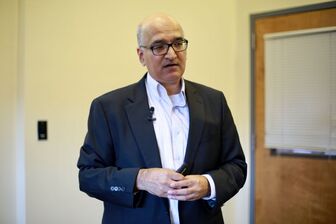 I am an author, speaker, career success coach. I guide people thrive on high stakes stage whether it's for a job interview, career advancement, a sales presentation or a high-stakes speech. I am the author of a practical book on speaking titled Winning Speech Moments: How to Achieve Your Objective with Anyone, Anytime, Anywhere. The main idea of the book is that if you want people to remember your speech and take action, you must create a winning speech moment. Please download the free speech checklist I created that I always use to create a winning speech for any occasion. Please contact me if you would like to thrive on high stakes stage. You can reach me at joza@winningspeechmoments.com or 732-847-9877. Note, if you are an author, executive, podcaster or interesting and would like me to interview with five questions and then publish it as a blog post and promote it on LinkedIn, Twitter and Facebook and become famous, please contact me. In the HBR article “When CEOs Make Sales Calls,” Noel Capon and Christoph Senn identify five archetypes of CEO Sales Engagement: Hands-off, Loose Cannon, Social Visitor, Dealmaker, Growth Champion. According to the authors’ research, the most effective archetype is the growth champion. They write that leaders who exhibit growth champion behavior “focus on both relationships and revenue building, and as they unlock growth opportunities, they serve as role models for others in the organization.” Unfortunately, they make up only 14%. What makes growth champions effective is they engage with strategic customers and see things from customers’ points of view and how their company can help the customers solve their problems. We see an example of that with the tweet sent by Marc Benioff, CEO of Salesforce, to Governor Murphy of New Jersey and Mayor Bowser of Washington D.C. From reading the Businessweek article, Benioff knows that both Governor Murphy and Mayor Bowser have a big problem getting people vaccinated. And he knows that they don’t want to be in the news every day that they are not getting the job done. So he sends a tweet to see if he can help them. Benioff probably sent this tweet in consultation with the sales and marketing team working on those accounts. Benioff captures the main points in the tweet. 1) What can Salesforce do for them? Replace their failed Microsoft implementation---for FREE. 2) What has Salesforce done with other similar clients? They have 100s of success stories of vaccine implementations. 3) How can they get in touch with Marc Benioff? Send him an email to ceo@salesforce.com. 4) How did he come to know of their problem? Businessweek article. 5) Why send this tweet? It shows that he is a growth champion and ready to help a potential customer solve their problem. Furthermore, he is modelling a behavior throughout the Salesforce organization on how to achieve growth. And Salesforce is still growing. Note, I have no information whether this tweet got a reply from Governor Murphy or Mayor Bowser. But it should have. Today, speed wins. Is your CEO ready to get engaged in helping you get into an account to grow business? If not, show him how Marc Benioff does it being a growth champion. Perhaps you can get your CEO to help you close strategic deals. ##### 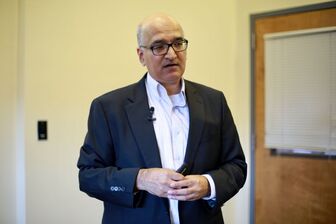 I am an author, speaker, career success coach. I guide people thrive on high stakes stage whether it's for a job interview, career advancement, a sales presentation or a high-stakes speech. I am the author of a practical book on speaking titled Winning Speech Moments: How to Achieve Your Objective with Anyone, Anytime, Anywhere. The main idea of the book is that if you want people to remember your speech and take action, you must create a winning speech moment. Please download the free speech checklist I created that I always use to create a winning speech for any occasion. Please contact me if you would like to thrive on high stakes stage. You can reach me at joza@winningspeechmoments.com or 732-847-9877. Note, if you are an author, executive, podcaster or interesting and would like me to interview with five questions and then publish it as a blog post and promote it on LinkedIn, Twitter and Facebook and become famous, please contact me.  Fred Dust Fred Dust Thomas Watson, Sr., President of IBM from 1914 to 1956, coined the phrase "Nothing happens until a sale is made." But a sale doesn't just happen; you must make it happen. And that often involves having good conversation skills. In this blog post, I interview Fred Dust, an expert on creative conversation. Suppose you want to succeed in life, business or relationships. In that case, you must cultivate and master your conversation skill no matter how long you have been having conversations that matter. Most of us think we know how to have good conversations with people. But there is a lot involved in developing creative conversation skills to move things forward. I learned this from reading Fred Dust's outstanding book, "Making Conversation." Conversation is like breathing. We all do it but hardly pay much attention to it. As you will learn in the book, your success often depends on how effective you are in designing creative conversations. Fred Dust has become an expert in designing creative conversation from his life and work experience. When he once had a meeting with the Prime Minister of Greece, George Papandreou, Dust gained valuable insight about conversation that "designing slower dialogue may actually allow us to solve big problems." According to Dust, a creative conversation must move things forward. He writes in his book that "It must help us shift from thinking and talking into the act of doing. Agreement cannot be enough; action is required… [It] must work to resolve differences, must explore hard issues, and must be aimed toward a positive outcome." Dust applies what he learned about the design aspect of conversation, working as a Senior Director and Global Managing Director at IDEO, a global design and innovation company. A good design of a conversation consists of seven essential components: Commitment, Creative Listening, Clarity, Context, Constraints, Change and Create. Spend time and practice these seven components of creative conversation. You will start having good conversations and will start moving things forward, even a sale. I want to thank Fred Dust for answering the questions and Lindsey Armeen for facilitating getting this blog post completed. Five Questions Q: How much preparation do you go through before any meaningful conversation you are going to have? Can you share an example of preparation you did recently before having a conversation? How did it go? Do you do pre-mortems before having a conversation and post mortem afterward? To begin where you end, I don't tend to call things pre-mortems and post mortems as that assumes that the conversation has already died. In my book, I talk a lot about setting the space ahead of time. Thinking about context and the explicit and implicit rules of the conversation and most especially committing to the conversation. When we think about 'preparing' for a conversation, our natural default is to think -"What is it that I am going to say?". And what I am advocating for is sort of the opposite. Spend your time thinking about everything but what it is you are going to say. For example, is the conversation taking place in an environment and setting that is conducive to the outcome you are seeking? Before every team meeting, I would always clear the room and the whiteboards of everything non-essential. Everything that might distract from what our conversation was centered around. But I even still do this with my husband before dinner every night. We clear the table of everything. Or even more simply, ask yourself if you are committed to the conversation. Not committed to being right. Not committed to the answers you want to hear. But committed to giving of yourself fully at that moment to the other person/people in the room. Q: How should one design a conversation during a job interview? Here is what I usually recommend to people I coach. You can tell me what you would do to make the conversation design better. Intro -- Brief two to three-minute statement that includes the following: ● Message ● Narrative ● Value you can deliver to an employer Middle: Focus on one to three problems you can solve that will add value to a company Ending ● Validate that you understand the job with the interviewer ● Address any concerns interviewer may have about your ability to do a good job ● Summary:
That's a really great and useful template. Every interview is nerve-wracking no matter who you are, and so preparation templates like this are often the best way to cultivate a feeling of confidence vis-a-vis preparation. But it reminds me of a story one of the guys on my team told me about when he was a Producer auditioning actors for parts that taught him a great lesson about interviews. That lesson was; make a genuine connection first, worry about memorizing the lines second. Often the very simple question I will ask someone in an interview is; tell me your origin story, like you we're a Marvel superhero. That's because like the producer, I'm looking to see if this person fits the part, do they have a good connection with what the job will need. Clearly, job interviews are not acting gigs. Preparation and gameplans like the one above are super important. But I tell people that being completely present and available to the conversation, creating a real human connection with the person you are talking with, often goes just as far if not further than the polished interview. So why not do both! Q: When you write in your book that conversation "must work to resolve differences, must explore hard issues, and must be aimed toward a positive outcome," do you mean from both sides? If so, then a conversation you are talking about is really a negotiation? Again if you say negotiation, you see negotiation. I feel like the word makes a conversation sound hostile, it's why I don't use it, but in fact, no, I don't really mean negotiation. Our conversation scripts are operating without our "approval" or without our conscious awareness of them\ all day long. So my goal is just to help people get better at noticing those scripts, so they don't unintentionally derail or prevent a productive conversation from happening. To get to your question, when we say "negotiation," for many of us, that word evokes car salesman or FBI hostage negotiator. And while both of those things can be illustrative examples of kinds of conversation, their connotation is mostly adversarial, which is a script I'm trying to steer us away from. I say this because I am not a postmodernist. I don't believe all language games are power games. I believe that language games can also be mutual discovery games and communion games. So good conversation is about exploring both where tension and alignment points are, figuring out why they're there, and then seeing what if anything we can do about it. That is a negotiation of sorts technically, but it's also so much more than that. It's a collaboration and a journey too. One final note on that point, if both parties are acting in good faith and are committed to the conversation but cannot resolve a tension point... I tell people that that's ok too. The idea I try to get across in the book is that it's ok to arrive at those moments. But you have to try first. Q: With short attention spans, how can you make it easier for someone to listen to you? How do you keep it short, simple, and impactful? Should you use simple sentences? Should you keep repeating the main message you want to convey? Should you not assume that the other person knows what you know? I LOVE this question, thank you. Some of the best feedback I have been getting from the book is centered around this topic which surprised me at first but makes total sense in retrospect. Our days feel compressed. We are on zoom nonstop. Our time and attention are fractured. And it is more difficult to stand out over the noise. So in light of that, my advice to people is two-fold. 1.) One of my entire chapters is devoted to clarity. Make things simple and accessible. We are drowning in word-salads and corporate lingo and legalese. Clarity creates lasting impressions in the listener's mind and makes it so the conversation stays accessible to the people who need to access it. 2.) I tell people to get good at telling what I call "illuminations." Illuminations are short 2 minute stories that capture the essence or spirit of what you are trying to convey and reveal to the listener something about you. All illuminations should have four things in common. Number 1, they are short. Number 2, they should end where they start. Number 3, they should all have a twist or a surprise baked in them, and Number 4... well in the spirit of Number 3, you need to read the book to find out. Q: To move things forward, should you ask "What can we do?" instead of "What do you think?" so the other person has to address what you can do together to advance something? Oh yes, I love this question as well thanks again. One of the guys who works for me is a big neuroscience nerd, and he always wants to talk about left-brain/right-brain synchronization and activation, and I just always remind him he's forgetting my chapter on clarity. He would say that we need to get out of left-brain analytical/rigid thinking where conversations can get hung up. Instead, I would just say; we need to get into proactive doing. Simply put, if you can't talk with someone, if there is just nothing you can agree on, then go make something with them. Do something with them. Build a barn. Bake bread. Clean out the garage. Play a sport. Both of these are getting at the same idea, of course, it's just my way of phrasing it is more fun. Books Recommended by Fred Dust Jubilee: Recipes from Two Centuries of African American Cooking: A CookBook by Toni Tipton-Martin The stories will reveal elements of history, surprise as well as sustain you in remarkable ways. Jane Austen Novels: Pride and Prejudice Sense and Sensibility Persuasion Mansfield Park Emma Northanger Abbey AudioBook Collection If you want to see how witty and powerful conversations happen and how gossip can change the world. Giving Voice to Values: How to Speak Your Mind When You Know What’s Right by Mary Gentile. Mary goes deep into what allowed whistleblowers to call out injustice with some surprising revelations on how and who can do it. Fred Dust’s Contact Information LinkedIn: https://www.linkedin.com/in/freddust/ Twitter: @f_dust Website: https://makingconversation.com/ Fred Dust’s Appearances Discussing “Making Conversation” YouTube: Making Conversation: Seven Elements of Meaningful Communication by Fred Dust Host: Chris Voss How to Make Meaningful Conversation Host Mary Stack - GBH Forum Network Making Conversation Host: George Hammond - Commonwealth Club if California Audio Podcasts The Unmistakable Creative with Srinivas Rao How to have the most challenging conversations of your life Curious Minds at Work with Gayle Allen CM 180: Fred Dust On Making Conversations Better Happen To Your Career Make Better Conversation: Key Lessons To Connecting With Anyone The Conversation Factory with Daniel Stillman Making Conversation with Fred Dust ##### 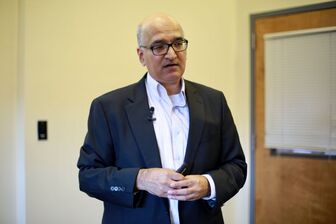 I am an author, speaker, career success coach. I guide people thrive on high stakes stage whether it's for a job interview, career advancement, a sales presentation or a high-stakes speech. I am the author of a practical book on speaking titled Winning Speech Moments: How to Achieve Your Objective with Anyone, Anytime, Anywhere. The main idea of the book is that if you want people to remember your speech and take action, you must create a winning speech moment. Please download the free speech checklist I created that I always use to create a winning speech for any occasion. Please contact me if you would like to thrive on high stakes stage. You can reach me at joza@winningspeechmoments.com or 732-847-9877. Note, if you are an author, executive, podcaster or interesting and would like me to interview with five questions and then publish it as a blog post and promote it on LinkedIn, Twitter and Facebook and become famous, please contact me.  Mario Gerard, Host of TPM Podcast, TPM Blogs and Principal TPM Mario Gerard, Host of TPM Podcast, TPM Blogs and Principal TPM Mario Gerard is a great resource that I highly recommend you turn to if you want a better understanding of different technical jobs that may interest you and for which you may qualify. Even if you are happy with your current technical job, it does not hurt to know what potential path you have available in your career. Mario uses his vast experience as a technical professional to teach others on different technical opportunities available to pursue in his or her career. And what it takes to get those jobs is what it takes to succeed once you start the jobs the first 90 days, the first year, and how to become a competent technical professional and take on more challenges. Mario is an excellent communicator. He simplifies things so that anyone can understand. He is an outstanding teacher. He asks questions that we want to ask of his guests. I have recommended his blog posts and podcast to others. They have found it very helpful. To give you an example, you can check out his podcast with his guest, Visva Mohanakrishnan, Senior Technical Progam Manager (TPM) at Amazon, in two parts. In the two podcast episodes with her, I learned about the following items:
In his podcast, Mario not only asks questions to get the perspective of his excellent guests, but he also provides his perspective from his experience. You will get a solid understanding of what is required to succeed in different technical jobs. I want to thank Mario Gerard for taking the time out of his schedule to answer my questions. Five Questions Q: Can you explain the role of a technical program manager (TPM) as it exists at many companies? Do you see this role evolving in the future from how it is today? In short, a technical program manager (TPM) enables tech organizations to achieve their goals faster. This is done by the TPM being the single point person to be responsible for critical programs. The reason this role has become critical in recent times is that every program that is critical requires the TPM to effectively communicate technical issues and problems and work with several dependencies that are owned by other teams. The role is already significantly evolving, we can see this because we now have TPMs who specialize in certain areas like front end systems, backend systems, operational excellence, cloud technologies, payments, fraud, etc. Q: TPM is a hard job, so what kind of people you can turn to from whom you can learn and get advice? Who did you learn from when you were starting out? And now that you are principal TPM, whom do you go to when you want to bounce off ideas? Is there a support group for TPMs to share ideas and discuss best practices? Have you seen this at other places where you have worked? Generally, as a TPM, you can get advice and pointers from more experienced TPMs within your own organization. Also, you can always get help from SDMs (Software Development Managers) as well. I was lucky to have a very good peer group of TPMs both within the organizations I have worked at and also had a good circle of TPMs outside my organization who I could use to bounce ideas with. As a Principal TPM, I use my management chain to get help when required and use my peer network of TPMs within the organization heavily. There are people who are experts at solving certain types of problems; knowing who they are and what each person's expertise is generally a great start. I also help TPMs at various organizations with advice when they reach out to me. Q: Can the technical program manager's role be divided between the software development manager and the product manager? Or is it that there are too many products and software development projects that have to be managed in a coordinated manner to ship a product that there is a real need for a TPM? Yes, the TPM role could be divided between the SDM and a PM if they have the right set of skills. However, if both those roles have their hands full and need someone who could help their team scale, a TPM would be a great addition. The same goes for teams that do not have a Product Manager. There are several instances where a TPM also takes on the role of a PM's role when the team does not have a PM. This is particularly true when the TPM is very technical, and the Product that is being developed is also technical in nature or when the TPM has significant Product based knowledge. In general, the need for a TPM is generally higher if the organization is structured in such a way that there are too many dependencies outside the primary team's control. Q: What does a typical day (if there is one) look like for a technical program manager? A typical day for an embedded TPM would involve the following activities:
Q: Have you worked at a company where you had both a technical program manager and a business program manager? Is there a handoff that takes place from a TPM to a BPM as you the Product is close to being shipped? Do you even need both a TPM and a BPM? There have been instances where we have had a business PM whose primary responsibility is to interact with customers. This is generally true in an organization where the Product is a B2B product. In this type of organization, the BPM is generally responsible for customer interactions, dealing with legal, creating a go-to-market plan, working with press relations, etc. While the TPM is more internal-facing and is primarily responsible for building and shipping the product. Three Books Recommended by Mario Gerard Measure What Matters: How Google, Bono and the Gates Foundation Rock the World with OKSs by John Doerr Solution Architect’s Handbook: Kick-start your solutions architect career by learning architecture design principles and strategies by Saurabh Shrivastava, Neelanjali Srivastava, Kamal Arora Art of Scalability. The Scalable Web Architecture, Processes, and Organizations for the Modern Enterprise by Martin Abbott and Martin Fisher Resources Mario Gerard Website TPM Podcast Mario’s Contact Information LinkedIn: https://www.linkedin.com/in/mariogerard/ Email: mario.gerard@gmail.com Twitter: mariorgerard #####  I am an author, speaker, career success coach. I guide people thrive on high stakes stage whether it's for a job interview, career advancement, a sales presentation or a high-stakes speech. I am the author of a practical book on speaking titled Winning Speech Moments: How to Achieve Your Objective with Anyone, Anytime, Anywhere. The main idea of the book is that if you want people to remember your speech and take action, you must create a winning speech moment. Please download the free speech checklist I created that I always use to create a winning speech for any occasion. Please contact me if you would like to thrive on high stakes stage. You can reach me at joza@winningspeechmoments.com or 732-847-9877. Note, if you are an author, executive, podcaster or interesting and would like me to interview with five questions and then publish it as a blog post and promote it on LinkedIn, Twitter and Facebook and become famous, please contact me. We often don't pursue a job unless we have experience. So how do you get a job when you don't have the experience? It's is a classic chicken and the egg problem. How do you get the experience if you don't get the job first? Suneel Gupta offers an excellent approach to try in his book "Backable: The Surprising Truth Behind What Makes People Take A Chance On You." He explains what Reid Hoffman (entrepreneur, venture capitalist, author, podcaster) did early in his career to become a product manager at Apple without any experience. Instead of competing with better-qualified candidates, Hoffman tried something different. He approached James Isaacs, the head of product management, whether he would be open to looking at his ideas presented in a document. Isaacs agreed. After completing his document, Hoffman went to see Isaacs get his feedback. Though the document was not perfect, it showed to Isaacs that Hoffman had real potential. By taking a chance on Hoffman, Isaacs was now invested in Hoffman's success. And that's how Hoffman started his career in product management. Gupta used this lesson when he was trying to get funding for his startup. Hoffman advised Gupta that when you pitch for financing, address one to issues that are problematic right upfront. Don't wait for it to come up in Q&A. If address the issues upfront and show how you plan to address them, they may be more willing to take a risk on your startup. It worked. Gupta received funding for his startup. So the lesson here is that when you don't have the experience, there is a lot of uncertainty that makes it easier for someone to say no. The one way to overcome this uncertainty is to point it out upfront and then do something about it that makes you less uncertain. That is what Hoffman did that jumpstarted his career. That is what Gupta did that got him funding for his startup. That is something we can all do to get ahead in our careers, business and life. ##### 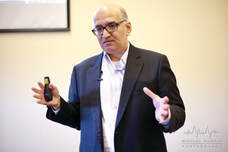 I am an author, speaker, career success coach. I guide people thrive on high stakes stage whether it's for a job interview, career advancement, a sales presentation or a high-stakes speech. I am the author of a practical book on speaking titled Winning Speech Moments: How to Achieve Your Objective with Anyone, Anytime, Anywhere. The main idea of the book is that if you want people to remember your speech and take action, you must create a winning speech moment. Please download the free speech checklist I created that I always use to create a winning speech for any occasion. Please contact me if you would like to thrive on high stakes stage. You can reach me at joza@winningspeechmoments.com or 732-847-9877. Note, if you are an author, executive, podcaster or interesting and would like me to interview with five questions and then publish it as a blog post and promote it on LinkedIn, Twitter and Facebook and become famous, please contact me.  Super Bowl is here again. It is the pinnacle of a long National Football league (NFL) season where the winning team will walk away with the most coveted trophy in American sports: the Vince Lombardi trophy. The winning team's players will receive their Super Bowl rings and the glory that accompanies winning the big game. To make it in the NFL, you must have a boatload of talent and willpower. Then to make it to the Super Bowl, you are the best of the best. That's why the game gets so much attention since it has a lot to teach us how to be the best in what we do and what it takes to win the ultimate prize of success. For us, our equivalent to playing in a "Super Bowl" is a job interview. To get an interview that can lead to getting a job and having a good career requires a lot of work. You need a good education, strong work experience, and marketable skills. When you do well in a job interview, you win a job, get a pay increase, and a path to a good career. To win a job interview, you have to be talented, experienced, adaptable, well-prepared, and poised. Interviews are highly stressful, and they should be since there is so much riding on them. Both you are the employer have to make a decision on making a big investment. And if it does not work out, it can be devastating for both. This makes interviews very high stakes and high opportunity. Football payers strive to have an opportunity to prove their worth in the Super Bowl. All NFL players are winners to be playing in the NFL. But they want more. They all have two goals: One, to get in the Super Bowl; second, win it. Is it just another game? Yes and No. The game does not change. But It is no ordinary game. It is the only game watched by over a hundred million people all around the world. People scrutinize every play on the field, every decision made by coaches, every call made by officials, every commercial aired on TV, and every song sung by the entertainment act during half time. Similarly, you have to prove your worth in a job interview. You are being judged on what you say and do during a job interview. You have to know what you are up against since there are no second chances. Your real competition is not another candidate but the interviewer. The other candidates can't affect your performance. It is how well you play the interview game against the interviewer to get you the win. You are probably saying at this point, hey, I thought I was just interviewing for a job, not taking it like I was playing in a so called "Super Bowl." Perhaps you should. Are you working hard to get an interview in the first place? And then, when you do get an interview, are you doing whatever it takes to get the job offer? If the answer to both is yes, then you have the same mindset of an NFL player. The stakes are very high for the Super Bowl as there is a lot of hype surrounding the game. For your job interviews, you have to raise the stakes. Unfortunately, many don't. I am amazed at how ill-prepared candidates often are for job interviews. People don't realize how much work is involved when you are interviewing for a job. Many have done more preparation for their SATs than they do for job interviews. You may get away with this for entry-level positions, but not if you want to get ahead in your career. Your competition will get much more difficult, and you can assume that they are all in it to win it. Most people can't give a well-thought answer to a simple question, "Tell me something about yourself?" Can you answer that question and score a "touchdown" in the opening question? If you do, your chances of winning the job go up quickly. It is a statement answer for the interviewer. He or she will know that you have not just shown up to play but are ready to stand out and secure an offer. Having a good career is not an accident, just like winning a Super Bowl is not an accident. Winning a Super Bowl means you worked harder, smarter, better than others both individually, as a team, and as an organization. And probably got some luck along the way too. Football players don't do it alone. They have had all kinds of coaches from young age to a professional career. You can do the same by having a support group, mentors, and coaches to succeed. Winning is a team sport, whether it's Super Bowl or job interviews. Stakes are very high; thus, rewards are very high. That means you must want it badly and willing to do just about anything to win. Now go plan, prepare, and play to win like the NFL players will do at this year's Super Bowl. You can be a winner and get to celebrate your getting a new job with your family and friends and then start planning for your next win. #####  I am an author, speaker, career success coach. I guide people thrive on high stakes stage whether it's for a job interview, career advancement, a sales presentation or a high-stakes speech. I am the author of a practical book on speaking titled Winning Speech Moments: How to Achieve Your Objective with Anyone, Anytime, Anywhere. The main idea of the book is that if you want people to remember your speech and take action, you must create a winning speech moment. Please download the free speech checklist I created that I always use to create a winning speech for any occasion. Please contact me if you would like to thrive on high stakes stage. You can reach me at joza@winningspeechmoments.com or 732-847-9877. Note, if you are an author, executive, podcaster or very interesting to talk to and would like me to interview with five questions and then publish it as a blog post and promote it on LinkedIn, Twitter and Facebook, please contact me. Ethan Evans is one of the best go-to sources to get an excellent understanding of different jobs you can move into in the tech space. If you want to get ahead in your tech career, you must follow Ethan, listen to his podcast, and watch his YouTube channel. Ethan will guide you on potential technical career paths you may want to pursue, what you have to do to get these jobs, and how to succeed in these jobs. Careers don't just happen; you have to make it happen. Ethan will give you some straight talk that you have to work hard and smart to have a good career in tech. Ethan's tag line on his website (ethanevans.com) is "Sharing what I have learned to help you succeed." He has tremendous credibility in providing great career advice since he has done it all in the technical area. He worked for startups for twelve years and at Amazon for fifteen years, with the last seven years as vice president. He recently retired from Amazon to focus on speaking, coaching, and consulting. What makes Ethan interesting to listen to is his passion for tech and his ability to communicate effectively about different tech jobs. He is a must source for people working in tech jobs and those working in non-tech jobs to understand better the jobs tech people do and connect with them so both tech and non-tech people can exchange ideas and learn about each other's jobs and make the company successful. I learn a lot listening to Ethan's podcasts or his guest appearances on other podcasts. You will too. In this blog post, Ethan was generous in answering five questions about a not well-understood position, but very important for products' success in companies like Amazon--technical program manager. I want to thank Ethan for answering my questions and for all he does to help people. Five questions Q: Can you explain the role of a technical program manager (TPM) as it exists at Amazon? Technical Program Managers (TPM) at Amazon work to make things ship. I think of this in terms of questions.
Of course, no job can be boiled down to a single word, but TPMs focus on what it takes to get a product to release by a particular date. This includes the debates about what should be included in each sprint in an agile environment; the TPM is often the Scrummaster if there is one. It also includes coordinating with other teams to align schedules because rarely is any one team able to launch something major in complete isolation. Responsibilities will always overlap, but the TPM is the main owner of shipping the project on time. Q: What should a new TPM do in the first 90 days to ensure success? At Amazon, the core of early success is "start doing something today." Those who feel they need to sit back and absorb, or who need to test the waters and gain approval before acting, ultimately don't do as well as those who jump in and contribute. This is a challenge for TPMs because, in many ways, the TPM job is less of a "first 90 days" job than many other roles. This is because the TPM is often working on a primary goal that is 6 - 24 months long. But, there are things the TPM can do on day one, such as
This basic loop of understanding blockages and working on them will immerse you in learning and start moving the project towards completion. Through the 90 days, you then must learn the architecture, learn the web of dependent teams and technology, and move up from the daily blockages to the goals and strategy of the project. But the thing you can do on day one is ask a developer, "what do you need today," and go get it for them. By contrast, if you ask a manager, "what meetings can I sit in on to learn, who should I meet, what should I read" you are doing nothing wrong, but you are being less proactive and will earn less respect. Q: What skills you must have to move into a TPM role, and what skills you must develop to be successful? Particularly at Amazon, the T is for technical, so the basic skill required is to have the technical ability. This often means software development ability, but TPMs in other fields, such as hardware, can meet this requirement with skills in those fields. The skills you must develop are in project management (organizing a set of tasks and people to accomplish a goal by a given date), program management (thinking longer-term about the strategic direction of the product or service, not just the current release), and influence (ability to get others to help you hit your goals). The TPM must be good at driving forward progress every single day while also "looking around corners" to anticipate future needs. The best TPMs keep the work of their teams unblocked proactively so that precious developer time is never wasted. They are also very good at getting other teams to do what is needed to support their own team. Q: What kind of jobs people move into after working as a TPM for several years? The most common next move for a TPM is to become a software development manager. In some sense, dev managers need both project and personnel management skills. Becoming a TPM allows the person to break apart the challenge of learning both groups of skills into two steps. As a TPM, they learn project management and influence skills. Then as a dev manager then learn about directly managing people. Some TPMs go in the opposite direction, away from directly building software personally, to become Product Managers. In these cases, the TPM is usually motivated by the desire to have more input into what gets done. They wish to shift from owning the execution of the direction to owning the definition of the direction itself. Overall I think the TPM skill set is a great one. My first real leadership role in my career was as a TPM, though the company did not have that title. When I think of my core skill set, I consider myself to be a TPM to this day, even though I added other skills and responsibilities to that core as I became an executive. The core of my success comes from organizing a group of people to deliver results quickly. Q: Can you explain what you mean by your famous saying, "Results are the Currency of Credibility," and how is it applicable to a technical program manager? When I created the phrase Results are the Currency of Credibility, it was because I realized that people were more likely to listen to someone who had accomplished something meaningful in their sight. Talk is cheap, and lots of smart people have many opinions. One way to differentiate how much weight to give to the opinion is to look at what the person has accomplished, what results they have produced. When I see someone with lots of results, I listen to their ideas and opinions more closely, even if intellectually I may disagree with what I am hearing. I reason, "this person has accomplished great things and has this belief. Though the belief sounds strange to me, perhaps I had better put more effort into understanding what they mean, because it is working for them." For a TPM, the direct application of this phrase is in its influence on others. If they have shipped a lot, their teams will trust their decisions. Other teams, product managers, and development managers will tend to accept what the TPM asserts about their resource needs, schedules, and plans. What I specifically advise people is to make an impact by delivering valuable results before doing too much talking about what you think should change about the team or company. Five Books Recommended by Ethan Evans 1) Decisive: How to Make Better Choices in Life and Work by Chip and Dan Heath 2) Leadership and Self Deception: Getting Out of the Box by The Arbinger Institute 3) The Four Hour Work Week by Tim Ferris 4) I Moved Your Cheese: For Those Who Refuse to Live as Mice in Someone Else’s Maze by Deepak Malhotra 5) Eat That Frog: 21 Ways to Stop Procrastinating and Get More Done with Less by Brian Tracy If you would like to see Ethan's full book recommendations, then please click here. Ethan’s Contact Info: Website: https://ethanevans.com/ Twitch Channel: https://www.twitch.tv/search?term=ethanevans LinkedIn: www.linkedin.com/in/ethanevansvp Twitter: @EthanEvansVP Facebook: https://www.facebook.com/ethanevansvp YouTube Channel: https://www.youtube.com/channel/UC-BAdkBGjOIlccGLZ3jbLiA Ethan Evans’ Podcast: https://podcasts.apple.com/us/podcast/ethan-evans-podcast/id1461708488 TPM Podcast by Mario Gerard in which Ethan was the guest talking about technical account manager role: https://www.mariogerard.com/tpm-podcast-with-ethan-evans/ ##### 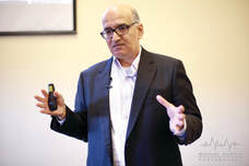 I am an author, speaker, career success coach. I guide people thrive on high stakes stage whether it's for a job interview, career advancement, a sales presentation or a high-stakes speech. I am the author of a practical book on speaking titled Winning Speech Moments: How to Achieve Your Objective with Anyone, Anytime, Anywhere. The main idea of the book is that if you want people to remember your speech and take action, you must create a winning speech moment. Please download the free speech checklist I created that I always use to create a winning speech for any occasion. Please contact me if you would like to thrive on high stakes stage. You can reach me at joza@winningspeechmoments.com or 732-847-9877. Note, if you are an author, executive, podcaster or very interesting to talk to and would like me to interview with five questions and then publish it as a blog post and promote it on LinkedIn, Twitter and Facebook, please contact me. |
AuthorJay Oza Archives
July 2023
Categories
All
|
© 2017 Winning Speech Moments





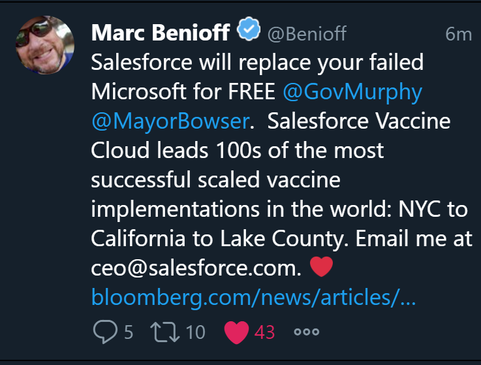
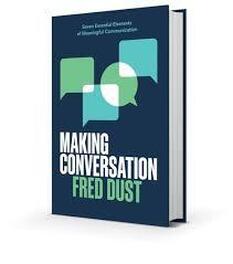
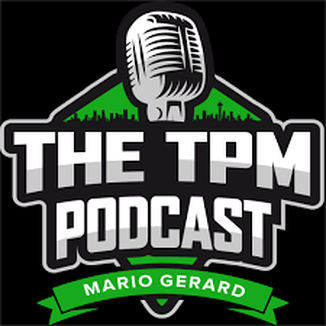



 RSS Feed
RSS Feed